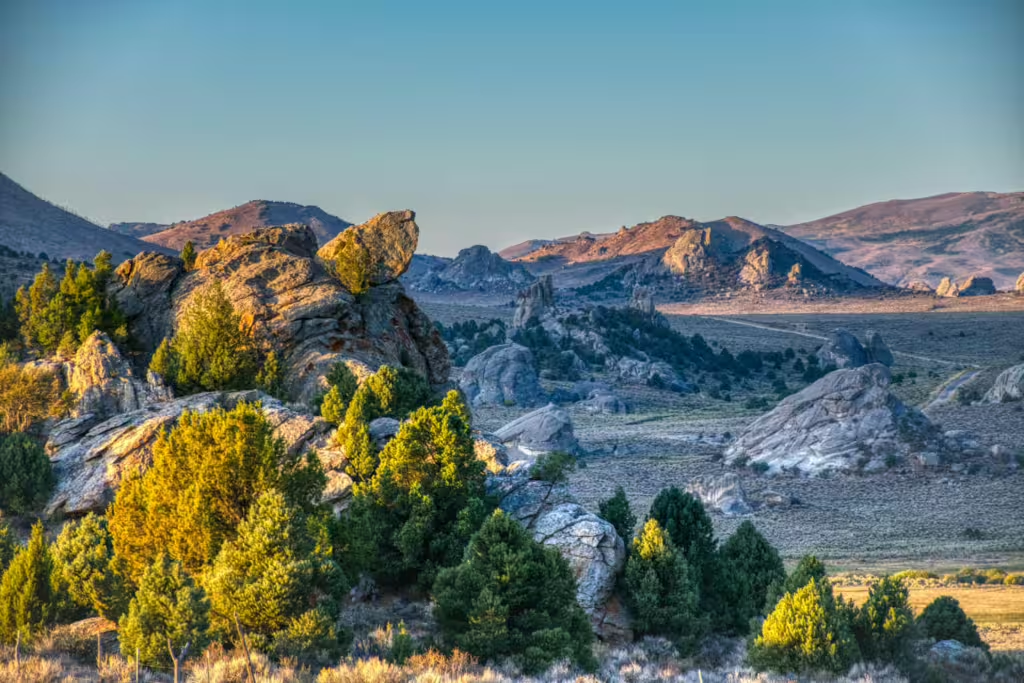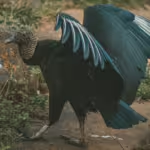Nature is a master of adaptation and over the past few billion years, has become something of an expert on the evolutionary process. Plants, those unassuming pillars of our natural world, are often overlooked for the the sake of their somewhat commonplace appearance, yet of all the many lifeforms with which we share our world, plants remain some of the most extraordinary in terms of adapting to various environments.
While towering oaks and colorful tulips get most of the attention, there’s an entire world of lesser-known plants—flowers, shrubs, and small trees—that have evolved extraordinary traits to survive in the harshest climates on Earth. Many of these plants have found ways to deter predators, attract pollinators, communicate with other plants and fungi, or even “walk” across landscape when they need to. And while these adaptations are all truly fascinating in their own right, they also play a critical role in supporting biodiversity, maintaining soil health, and fueling the life cycles of other species.
In this article, we will travel to the distant places across our incredible planet to find some of the most remarkable plants living today. We will go from the deserts of Africa to the alpine zones of the Himalayas, and reveal how each of these lifeforms contributes to its ecosystem in fascinating and often, very surprising ways.
Welwitschia (Welwitschia mirabilis) – Namibia
The Welwitshcia, a plant that is native to Namib desert, is one of the planet’s oldest and most resilient plants. It is believed that these hardy desert plants can live up to 2,000 years. Despite its strange appearance—two long, ribbon-like leaves that never fall off—the Welwitschia survives by absorbing fog through its leaves. It is also possessed of a deep taproot system, which allows it to access underground water.
Odd though it may be, Welwitschia is a vital piece of its Namibian desert ecosystem. The unique leaves of this plant offer shelter and moisture for insects and small animals, while its cones provide food for hungry pollinators. Most consider the Welwitschia to be a keystone species because it helps to stabilize soil and supports a specialized community of life in one of the harshest climates on the entire planet Earth.
Puya raimondii – Andes Mountains
The Puya raimondii is often referred to as the “Queen of the Andes,” and for good reason. This rare bromeliad species grows at elevations over 10,000 feet and takes nearly a century to bloom; making it pretty special and exceptionally rare to witness in person. When it does finally bloom, it produces a towering flower spike up to 30 feet tall and tens of thousands of blooms.
Puya raimondii isn’t just a pretty face either, this rare beauty provides a massive, albeit rare, nectar source for high-altitude pollinators like hummingbirds and certain bat species. The plant’s large structure also serves as shelter for more than a few species of nesting birds. Though rare and slow-growing, the Puya raimondii’s once-in-a-lifetime bloom has a ripple effect on surrounding species, supporting a burst of biodiversity in one fell swoop.
Pitcher Plant (Nepenthes) – Southeast Asia
At True Investigator, we love ourselves a good carnivorous plant. Take the pitcher plants that live in bogs, swamps, and deep jingles all over the world. These carnivorous shrubs are equipped with modified leaves shaped like deep cups, “pitchers” that allow the plant to trap insects and small animals, which are then digested for nutrients. Some species are large and effective enough to even trap small frogs or lizards.
These plants are vital to the health of their ecosystems because they serve a crucial function in nutrient-poor soils, especially in tropical rainforests and acidic bogs. By digesting prey, these plants recycle nitrogen and phosphorous into the surrounding ecosystem, supporting nearby plant growth. In addition, this unique method of survival creates microhabitats for other organisms, including mosquito larvae and spiders that live inside the pitcher.
Snow Lotus (Saussurea laniceps) – Himalayas
The Snow Lotus is a rare alpine flower that grows in cold, high-elevation environments where few other plants are able to survive. So-named because it is covered in dense white hairs, the Snow Lotus retains heat and moisture in an otherwise freezing landscape.
As one might surmise, the Snow Lotus plays a key role in its extreme environment in that it supports pollinators like alpine bees and butterflies. These insects rely on its early blooms for sustenance and seasonal survival through the long winter. In addition, the deep roots of these flowers help stabilize rocky soil prone to erosion, aiding in slope stabilization and water retention in mountainous ecosystems.
Resurrection Plant (Selaginella lepidophylla) – North America
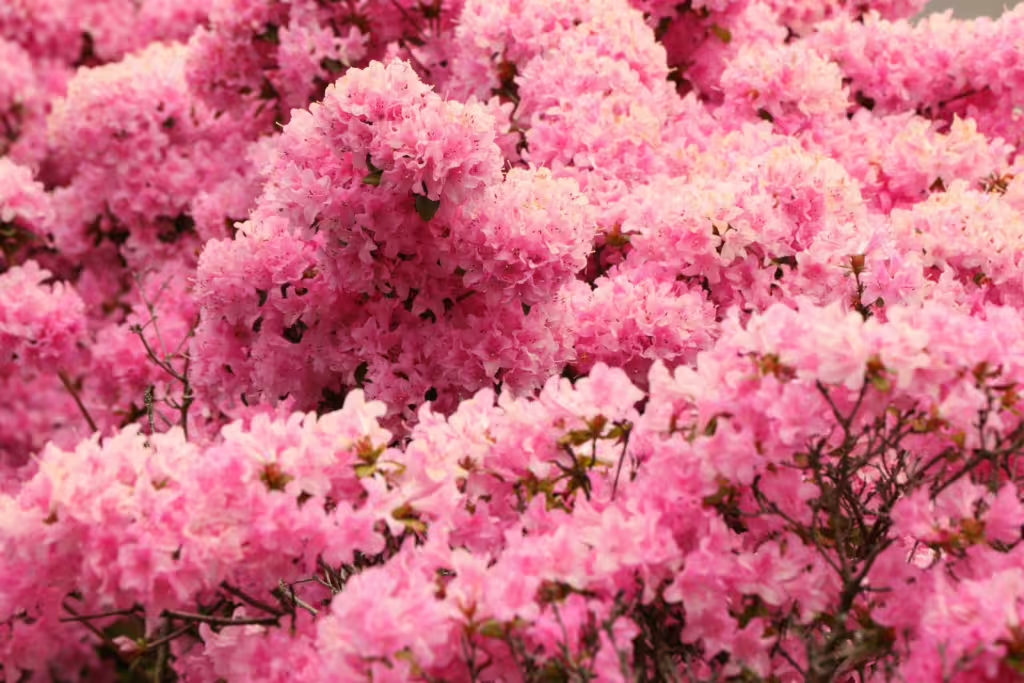
With a nickname like the “resurrection plant” you know this entry is bound to be interesting. This desert dwelling marvel can survive for years without water by curling into a tight ball and appearing to be dead. When exposed to enough moisture, however, the Resurrection Plant literally comes back to life, unfurling and turning from brown to green within hours.
This remarkable drought tolerance is what makes Selaginella such an amazing plant, as well as a critical part of its arid ecosystems. Resurrection Plants help to stabilizes sandy soils, reduce erosion, and provide a quick source of moisture and cover for insects and small animals when sporadic rainfall hits. These plants also act as a pioneer species, setting the stage for other plants to colonize dry habitats.
Corpse Flower (Amorphophallus titanum) – Sumatra
If you’ve ever had the…er pleasure of smelling a corpse flower in person, then you understand how its got its name. This tropical plant is known for its massive size and horrific odor, two aspects which we don’t usually associate with flowers, in general. The corpse flower is so-named because its scent mimics the smell of rotting meat. It does this in order to attract carrion beetles and flies so that it can pollinate through them. It only blooms every few years, but when it does, it can grow up to 10 feet tall.
Despite its notoriety, the corpse flower is a crucial inhabitant of its tropical ecosystem. These flowers serve as a specialist pollinator magnet, supporting insect populations that play additional roles in the food chain via decomposition and nutrient cycling. By mimicking decay, it also indirectly educates ecologists about plant-insect coevolution and scent signaling.
Hydnora africana – Southern Africa
This parasitic plant is not one that you’d be likely to view on a random nature walk, mostly because it grows entirely underground. That is, except for its fleshy, jaw-like flowers that stick out and emit a strong odor to attract wandering beetles. As a parasitic organism, the Hydnora africana latches onto the roots of host plants and steals nutrients from them in order to survive.
Cruel as that may seem, the Hydnora plays a complex role in nutrient cycling and supports detritivores and beetle populations that, in turn, decompose organic matter. Although parasitic, the roots of these plants don’t usually kill its host. In fact, its presence and its interaction with other root systems, actually promotes a more diverse soil microbiome.
Kauri Tree (Agathis australis) – New Zealand
The massive Kauri tree is unique in that it produces a sticky resin that protects it from fungi and insects. Its enormous canopy and vast root system affect everything beneath it, from light availability to soil acidity; which makes it sort of a pillar of its New Zealand community…no pun intended.
Kauri trees act as ecosystem engineers. They influence forest structure, water distribution, and nutrient availability. Their fallen leaves and wood decompose slowly, enriching the soil and providing long-term carbon storage, while their resin has antimicrobial properties that impact soil biology.
Living Stones (Lithops) – Southern Africa
No, we’re not having a laugh with this one. These tiny succulents look exactly like pebbles, an adaptation they likely adopted in order to avoid the herbivorous predators that share their harsh, open environments. Living Stones only expose their tops to the surface, with most of the plant remaining underground.
This remarkable camouflage combo is what makes these plants so unique but it also enables them to act as ground-cover plants in desert habitats. They reduce evaporation and offer small amounts of water to insects or burrowing animals. Their survival ensures micro-habitats can persist, supporting biodiversity in dry ecosystems.
Banksia – Australia
This genus of shrubs and small trees has fire-resistant cones that require heat to release seeds. Their flowers are rich in nectar and attract a wide variety of pollinators, including birds, bats, and insects.
Banksias are essential in fire-prone ecosystems. They not only regenerate after wildfires but actually depend on them to reproduce. Their deep roots prevent soil erosion post-fire, and their nectar-rich blooms support pollinator populations during seasonal droughts.
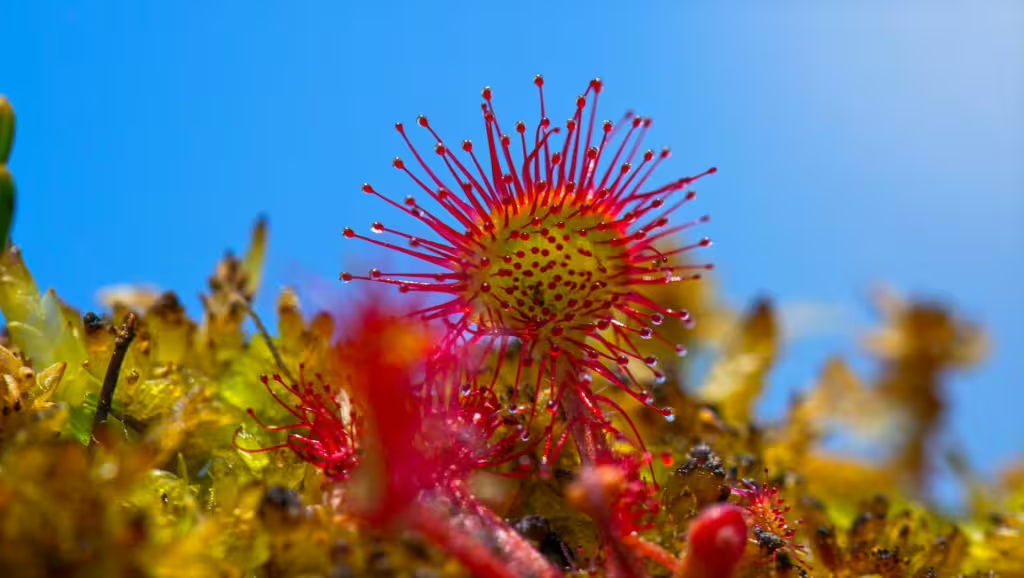
Sundew (Drosera) – Global Distribution
Another in a long list of unique carnivorous plant, sundews use sticky, gland-covered tentacles to trap and digest insects rather than makeshift pitchers or hinged “mouths.” The sparkling droplets on the sundew are used to mimic dew, thereby luring thirst prey to their demise.
Sundew, like pitcher plants and Venus Fly traps, are especially important in nutrient-poor wetlands, where they recycle essential minerals back into the environment. Also, these plants help to control insect populations and feed pollinators with leftover nutrients in the soil. In this way, sundews maintain wetland health and biodiversity.
Silversword (Argyroxiphium sandwicense) – Hawaii
The rare, Hawaiian silversword is a plant that thrives best on volcanic slopes where few other plants can grow. Its silvery, spiky leaves have been adapted to reflect UV radiation, thereby conserving moisture and minimizing sun damage to the plant, despite its elevation and lack of sun cover.
This endemic plant is crucial for supporting native pollinators like Hawaiian yellow-faced bees and its root systems aids in soil stabilization. This last aspect is particularly helpful on fragile lava flows, where the soil is notoriously unstable and crumbly. Thus, the Silversword’s root system promotes water absorption and erosion control, helping to anchor young volcanic landscapes.
Rafflesia arnoldii – Southeast Asia
The world’s largest single flower, the Rafflesia can grow up to 3 feet in diameter. Like the corpse flower, this large, breathtaking flower emits a powerful and exceptionally foul odor in order to attract carrion insects for pollination. Interestingly enough, the Rafflesia is just a flower, having no roots, stems, or leaves. How does this plant survive then, you may ask? Why, by living its entire existence as a parasite, of course.
Despite this parasitic nature, the Rafflesia plays a vital role in rainforest ecology by supporting carrion insect populations and contributing to genetic diversity. Its specialized pollination makes it essential to tropical forests, but sadly, its rarity also makes it a conservation priority. Conservation of this big, stinky parasite might seem unusual to some, but it will ensure longevity of its jungle ecosystems if it allowed to flourish; within reason.
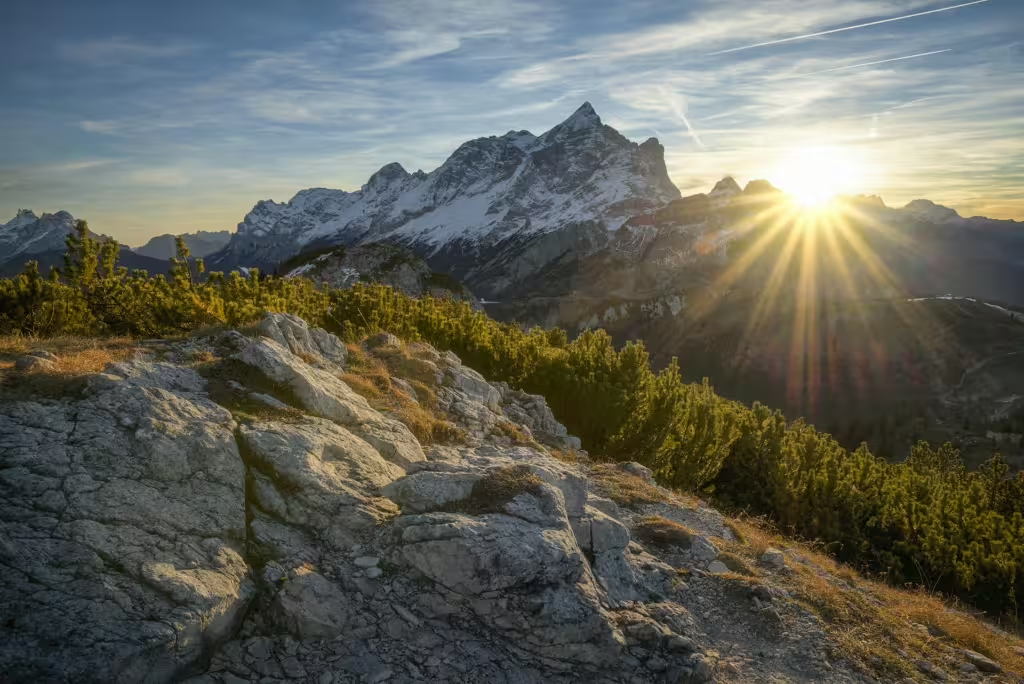
Dragon’s Blood Tree (Dracaena cinnabari) – Socotra Island
The Dragon’s Blood tree is an umbrella-shaped plant that produces a red resin known as, you guessed it, “dragon’s blood.” Its dense canopy captures moisture from mist and fog, funneling water down to its roots and the soil beneath.
The Dragon’s Blood tree plays an essential role in moisture recycling on the arid island of Socotra, where fresh water is often very scarce. Its resin also has antimicrobial properties and is used by local communities for medicine, giving it both ecological and cultural importance.
True Investigator Says…
As you can see, the world is full of amazing plants of all shapes, colors, sizes, and smells. From the deserts of Namibia to volcanic islands in the Pacific, these unique plants have evolved to not only survive but have been able to shape their environments in crucial ways. These plants can help stabilize soil, recycle essential nutrients, support rare pollinators and methodologies, provide homes for other animals, and keep insect populations in check. This is why they are all so crucial, because their very presence has ripple effects across entire ecosystems.
While many of these are often overlooked, each and every one of them reminds us that true ecological richness lies in the adaptations that few see and even fewer understand. As climate change and habitat destruction continue to threaten biodiversity the world over, it becomes more and more important that we learn to understand and protect these uniquely adapted plants. Perhaps by saving them, we can save ourselves in the end.
Discover more from TrueInvestigator
Subscribe to get the latest posts sent to your email.
